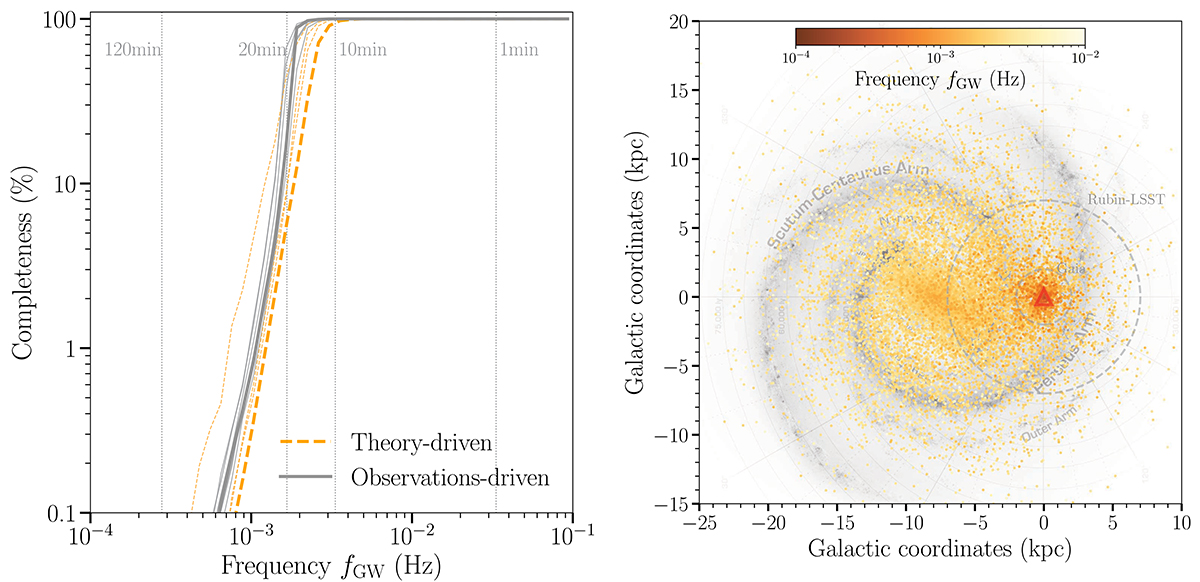Fig. 1.

Download original image
LISA’s capability to probe the Galactic WD+WD binary population. Left panel: Completeness of LISA’s Galactic WD+WD sample as a function of frequency estimated based on sets of mock Galactic catalogues: theory-driven (dashed orange lines; Korol et al. 2017; Wilhelm et al. 2021) and observation-driven (solid grey lines; Korol et al. 2022). Thick lines represent the respective default models, and thin lines model variations within each set (e.g. different prescriptions for binary interactions in the theory-driven models). Vertical dotted lines mark the respective binary orbital periods. Right panel: Spatial distribution of binaries with ρ1yr ≥ 7 within the Galaxy adapted from Wilhelm et al. (2021), colour-coded by GW frequency. In the background we show an artist’s impression of our current view of the Milky Way. The red triangle at (0, 0) shows LISA’s position, while the Galactic Centre is at ( − 8.2, 0). For comparison, we show estimated observational horizons for WD+WD binaries for Gaia and Rubin-LSST surveys (Korol et al. 2017).
Current usage metrics show cumulative count of Article Views (full-text article views including HTML views, PDF and ePub downloads, according to the available data) and Abstracts Views on Vision4Press platform.
Data correspond to usage on the plateform after 2015. The current usage metrics is available 48-96 hours after online publication and is updated daily on week days.
Initial download of the metrics may take a while.


